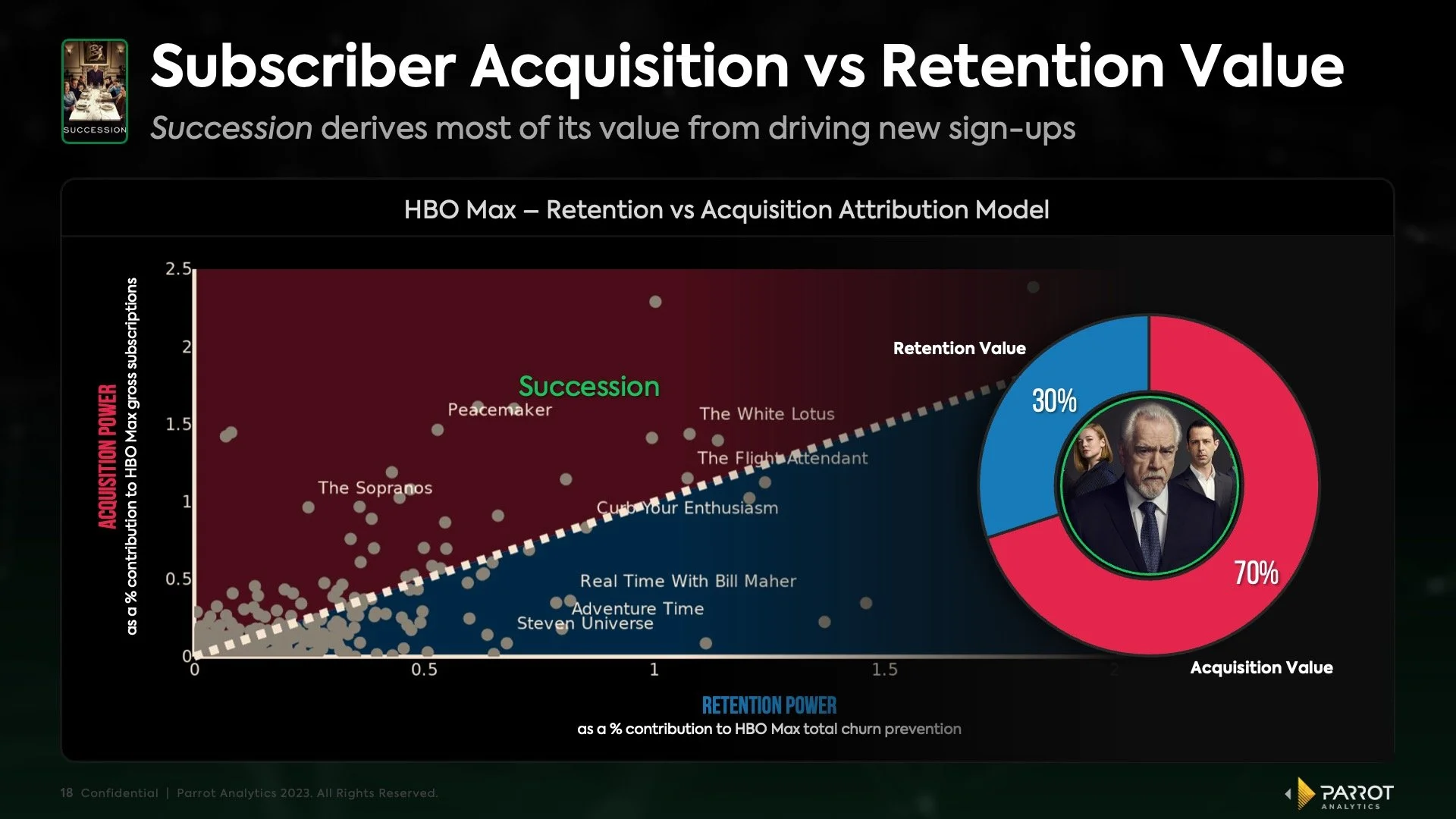Acquisition Versus Retention Value (As Told By Succession)
This is the first in a series of industry insights from Parrot Analytics.
Raw subscriber growth and viewership have long reigned as the most critical metrics of success in the entertainment industry, much like Succession’s Logan Roy perched atop his throne virtually unchallenged for decades. But as we’ve seen this season on the gripping HBO series, every King’s reign must come to an end.
As the streaming market continues to mature and fierce competition mounts from every flank, the industry must evolve the tools with which it measures overall value. It’s no longer only about delivering the biggest hit, it’s about sculpting the right kinds of hits.
Portfolio optimization is key when constructing a library of content and that means pairing titles that help drive subscription growth and acquire new customers with titles that help to keep existing subscribers on the hook and reduce churn. Max’s library is a great example.
Succession derives most of its value as an acquisition title, similar to DC blockbuster series Peacemaker and The White Lotus, according to Parrot Analytics data. These shows help generate new sign-ups, while titles such as Curb Your Enthusiasm and Real Time With Bill Maher serve as quality retention drivers that extend a user’s stay within the Max ecosystem.
Such a balance is how a streaming service efficiently builds an effective content library that tackles the two most integral elements of building a successful global SVOD service. And with content budgets under greater scrutiny than ever before, efficiency is key in 2023.


